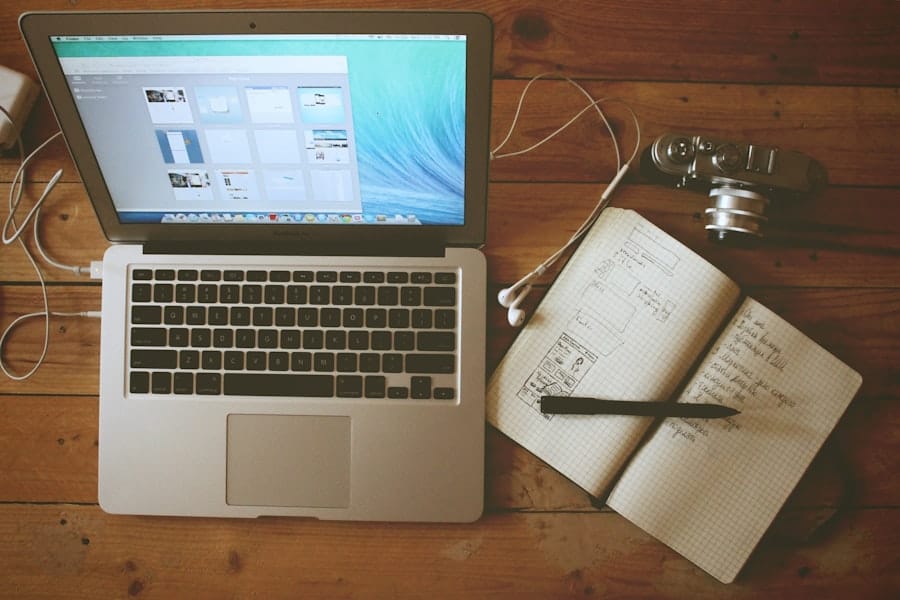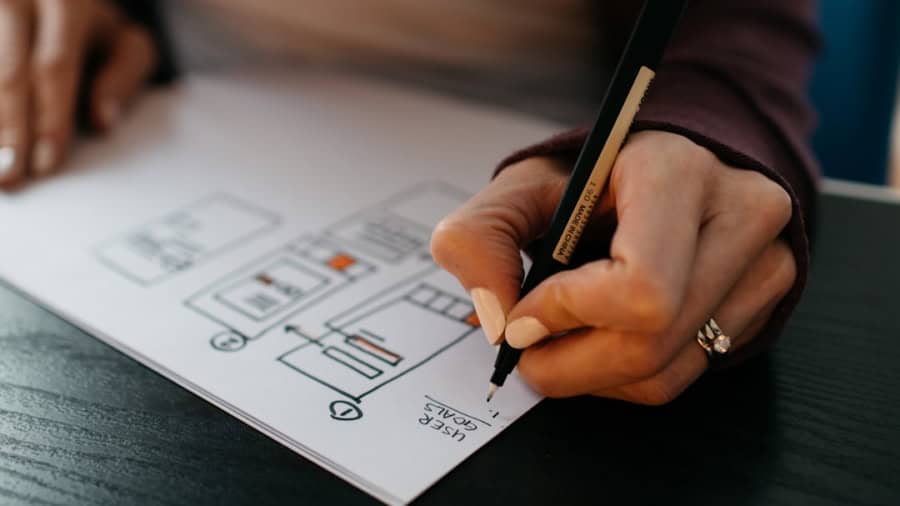Touchscreen technology has undergone a remarkable transformation since its inception, evolving from rudimentary interfaces to sophisticated systems that have become integral to various sectors, particularly education and design. The early days of touchscreen technology can be traced back to the 1960s when the first touch-sensitive screens were developed. These initial models were primarily used in specialized applications, such as military and industrial settings, where user interaction was limited and often required extensive training.
However, as technology advanced, the introduction of capacitive touchscreens in the 1990s marked a significant turning point. This innovation allowed for more responsive and intuitive interactions, paving the way for broader adoption in consumer electronics. In the context of education and design, the proliferation of touchscreen devices has revolutionized how information is presented and interacted with.
The introduction of tablets and touchscreen laptops has made it possible for educators to engage students in ways that were previously unimaginable. For instance, interactive whiteboards equipped with touch capabilities have transformed traditional classrooms into dynamic learning environments where students can participate actively in lessons. Similarly, in design industries, touchscreen technology has enabled designers to manipulate digital content with unprecedented precision and ease.
The ability to draw, sketch, and edit directly on the screen has streamlined workflows and fostered creativity, allowing for a more organic approach to design.
Key Takeaways
- Touchscreen technology has evolved to become a valuable tool in education and design industries, revolutionizing the way we learn and create.
- Using touchscreen laptops for educational purposes offers advantages such as interactive learning, increased engagement, and improved accessibility for students.
- Incorporating touchscreen laptops in design and creativity enhances the creative process, allowing for more intuitive and fluid design work.
- Touchscreen laptops have a significant impact on interactive learning, promoting active participation and personalized learning experiences for students.
- Utilizing touchscreen laptops for digital art and design projects enables artists and designers to work more efficiently and express their creativity in new ways.
Advantages of Using Touchscreen Laptops for Educational Purposes
Touchscreen laptops offer a multitude of advantages that enhance the educational experience for both students and educators. One of the most significant benefits is the increased engagement they facilitate. Traditional learning methods often rely on passive absorption of information, which can lead to disengagement among students.
In contrast, touchscreen laptops encourage active participation through interactive applications and multimedia content. Students can easily navigate educational software, engage with simulations, and collaborate on projects in real-time, making learning more dynamic and enjoyable. Moreover, touchscreen laptops cater to various learning styles, accommodating visual, auditory, and kinesthetic learners alike.
For instance, students who struggle with traditional text-based materials can benefit from visual aids and interactive elements that touchscreen devices provide. Applications that allow for drawing or annotating directly on the screen enable students to express their understanding in ways that resonate with their individual learning preferences. This adaptability not only enhances comprehension but also fosters a sense of ownership over the learning process, empowering students to take charge of their education.
Incorporating Touchscreen Laptops in Design and Creativity

In the realm of design and creativity, touchscreen laptops have become indispensable tools that facilitate innovation and artistic expression. The tactile nature of these devices allows designers to interact with their work in a more intuitive manner. For example, graphic designers can use stylus pens to create intricate illustrations directly on their screens, mimicking the experience of drawing on paper while benefiting from the versatility of digital tools.
This seamless integration of traditional techniques with modern technology has opened new avenues for creativity. Furthermore, touchscreen laptops support a wide array of design software that is optimized for touch interaction. Programs like Adobe Creative Cloud have adapted their interfaces to leverage touchscreen capabilities, allowing designers to manipulate layers, adjust colors, and apply effects with simple gestures.
This not only speeds up the design process but also encourages experimentation. Designers can quickly iterate on ideas without the constraints often associated with traditional methods. The ability to zoom in and out effortlessly or rotate designs with a swipe enhances the creative workflow, making it easier to visualize concepts and bring them to life.
The Impact of Touchscreen Laptops on Interactive Learning
The integration of touchscreen laptops into educational settings has significantly impacted interactive learning methodologies. Traditional teaching methods often rely on lectures and rote memorization, which can be less effective in fostering critical thinking and problem-solving skills. Touchscreen laptops enable educators to implement interactive learning strategies that promote collaboration and engagement among students.
Additionally, touchscreen laptops facilitate personalized learning experiences by allowing educators to tailor content to meet individual student needs. With access to a wealth of online resources and adaptive learning platforms, teachers can create customized lesson plans that cater to diverse learning paces and styles.
This level of personalization not only enhances student understanding but also fosters a growth mindset by encouraging learners to take risks and explore new concepts at their own pace. The result is a more inclusive classroom environment where every student has the opportunity to thrive.
Utilizing Touchscreen Laptops for Digital Art and Design Projects
Digital art has gained immense popularity in recent years, and touchscreen laptops play a pivotal role in this creative revolution. Artists can leverage the capabilities of these devices to create stunning visuals using various software applications designed specifically for digital art creation.
The tactile feedback provided by touchscreen laptops enhances the artistic process by allowing artists to experiment freely without the fear of making irreversible mistakes. For instance, an artist can easily undo actions or try out different color palettes with just a swipe or tap. This freedom encourages exploration and innovation, leading to unique artistic expressions that may not have been possible with traditional mediums alone.
Furthermore, the portability of touchscreen laptops enables artists to work on their projects anywhere, whether in a studio or outdoors, fostering inspiration from diverse environments.
Enhancing Collaboration and Presentation with Touchscreen Laptops

Collaboration is a cornerstone of both education and design industries, and touchscreen laptops significantly enhance this aspect through their interactive features. In educational settings, group projects often require seamless communication and coordination among students. Touchscreen laptops facilitate this by allowing multiple users to interact with the same device simultaneously.
Students can brainstorm ideas using collaborative software or engage in group discussions while visualizing their thoughts on the screen. In design contexts, touchscreen laptops serve as powerful presentation tools that enable designers to showcase their work effectively. The ability to manipulate designs in real-time during presentations captivates audiences and allows for immediate feedback.
Designers can zoom in on specific details or demonstrate design iterations on-the-fly, making presentations more engaging and informative. This interactivity not only enhances communication but also fosters a collaborative spirit among team members as they work together to refine ideas and concepts.
Challenges and Considerations in Implementing Touchscreen Laptops in Education and Design
Despite the numerous advantages of touchscreen laptops, there are challenges associated with their implementation in educational and design settings. One significant concern is the cost associated with acquiring these devices and maintaining them over time. Educational institutions may face budget constraints that limit their ability to provide touchscreen laptops for all students or classrooms.
Additionally, ongoing maintenance and technical support are essential to ensure that devices remain functional and up-to-date. Another challenge lies in training educators and students to effectively utilize touchscreen technology. While many individuals are familiar with basic touch interactions through smartphones and tablets, leveraging the full potential of touchscreen laptops requires additional skills and knowledge.
Professional development programs must be established to equip educators with the necessary training to integrate these devices into their teaching practices effectively. Furthermore, students must also be guided on how to use these tools responsibly and productively within their learning environments.
The Future of Touchscreen Laptops in Education and Design Industries
Looking ahead, the future of touchscreen laptops in education and design industries appears promising as technology continues to advance at an unprecedented pace. Innovations such as augmented reality (AR) and virtual reality (VR) are likely to be integrated into touchscreen devices, further enhancing interactive learning experiences. Imagine classrooms where students can explore historical sites through immersive AR applications or design projects that come to life in 3D environments—these possibilities are becoming increasingly feasible.
Moreover, as artificial intelligence (AI) continues to evolve, we may see personalized learning experiences become even more refined through adaptive software that responds to individual student needs in real-time. In design industries, AI-driven tools could assist designers by suggesting enhancements or automating repetitive tasks, allowing them to focus on higher-level creative thinking. As touchscreen technology becomes more sophisticated and accessible, its role in shaping education and design will undoubtedly expand, fostering innovation and creativity for generations to come.
In addition to the benefits of touchscreen laptops in education and design industries, another interesting article to explore is Exploring the Features of the Samsung Notebook 9 Pro. This article delves into the innovative features of the Samsung Notebook 9 Pro, highlighting how it can enhance productivity and creativity for users in various fields. By understanding the capabilities of different touchscreen laptops, professionals and students can make informed decisions about which device best suits their needs.
FAQs
What are touchscreen laptops?
Touchscreen laptops are portable computers that have a built-in touchscreen display, allowing users to interact with the device using their fingers or a stylus.
How are touchscreen laptops used in education?
Touchscreen laptops are used in education to enhance interactive learning experiences. They allow students to engage with educational content in a more tactile and intuitive way, making learning more engaging and effective.
How are touchscreen laptops used in the design industry?
In the design industry, touchscreen laptops are used for tasks such as digital drawing, graphic design, and 3D modeling. The touchscreen functionality allows designers to work more fluidly and precisely, making it easier to create and manipulate visual content.
What are the benefits of using touchscreen laptops in education and design industries?
The benefits of using touchscreen laptops in education and design industries include improved interactivity, enhanced creativity, and more intuitive user experiences. Touchscreen laptops also offer greater flexibility and mobility, allowing users to work and learn from anywhere.
Are there any drawbacks to using touchscreen laptops in education and design industries?
Some potential drawbacks of using touchscreen laptops in education and design industries include higher cost compared to traditional laptops, potential for screen smudging and fingerprints, and the learning curve for users who are accustomed to non-touchscreen devices.

